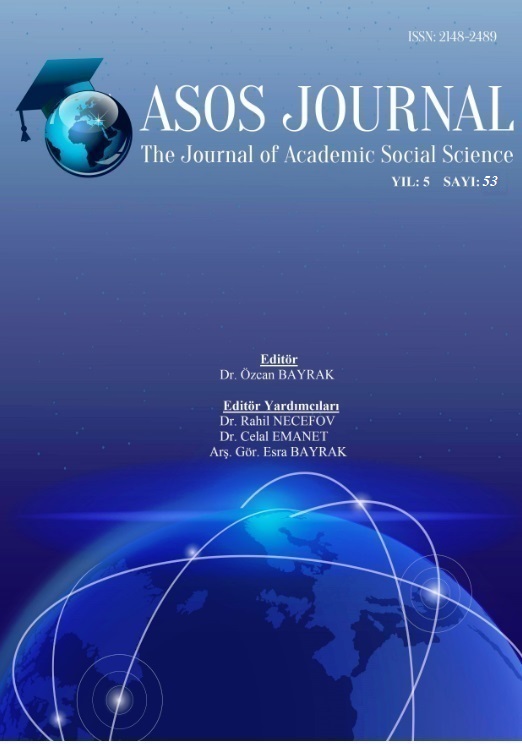Author :
Abstract
Bu araştırmada, değişen toplumsal sistem ve teknolojik gelişmeler etkisinde sanat eserlerinin çağlar boyunca geçirdiği felsefi söylem dili (biçimsel dil ve estetik söylem) analiz edilmektedir. Velazquez'in Nedimeler tablosunun bu birbirine paralel dönemler ve toplumsal sistemler dahilinde geçirdiği başkalaşım, temelde dönemin sanat anlayışını ortaya koymasının yanında sosyolojik açıdan incelendiğinde 20. yüzyıl ve sonrasında toplumsal beğeni ve estetik yargıların değişimini de ortaya çıkarmaktadır. Sanatta postmodern dönemde ortaya konulan Nedimeler tabloları, Velazquez'in tablosunu postmodern yöntemlerle yeniden yorumlamıştır. 1990 sonrası yeni bir vizyona sahip olan fotoğraf postmodernizmin montaj tekniği ile geçmişin görüntüsel özelliklerini tek bir çerçeveye yerleştirmiştir. Bunun yanında kurgu ve yerleştirmeler yapılmış, popüler kültür kapsamında ortaya çıkan yeni estetik reklam alanında da yeni bir değişimi beraberinde getirmiştir. Alışveriş reklam afişlerinden coca cola reklamlarına kadar Velazquez'in Nedimeler tablosunun farklı görüntüsel göstergeleri popüler kültür ve postmodern estetik kapsamında yeniden yorumlanmıştır. Sinema alanında da tablonun görüntüsel özelliklerinin yeniden ele alındığı görülmektedir. Bunun yanında edebiyat alanında da Nedimeler tablosu kimi romanlara konu oldu ve hakkında farklı hikayeler yazıldı. Bu değişim Velazquez'in tablosunun popüler kültür alanına taşınması, değişen dünyanın değişen diline yeniden uydurulmasıdır. Çağlar ve değişen toplumsal sistemler boyunca her dönem sanat alanında kendi talebini dile getirmiş, ortaya konulan sanat eserleri bu değişimin göstergeleri ve estetik yansımaları olmuştur. Her yeni paradigma yeni bir değişimin göstergesidir, bu dönüşüm, toplumun psikolojik ve sosyolojik yapısı doğrultusunda gelişmiştir. Tüm bu incelemeler sonucunda örnekleme alınan tek bir resim üzerinden farklı toplum ve kültürlerin hem estetik beğeni yargıları, hem de temsil ettikleri gerçeklik hakkında genel bir değerlendirme yapılmaktadır.
Keywords
Abstract
In this research, the language of philosophical discourse (formal language and aesthetic discourse) which art works have undergone through the ages under the influence of changing social systems and technological developments is analyzed. The metamorphosis that Velazquez's Las Meninas paintings have in parallel with each other and in social systems reveals the change of social appreciation and aesthetic judgments in the 20th century and later, when examined sociologically from the perspective of revealing the art concept of the period. The different versions of the paintings of Las Meninas, which were revealed in the art postmodern period, reinterpret the painting of Velazquez with postmodern methods. Having a new vision after 1990, the photography has set up a single framework of postmodernism's mounting technique and past visual features. Beside this, editing and layouts have been made, bringing a new change in the new aesthetic advertising field emerged within the scope of popular culture. From shopping banners to coca cola advertisements, the different visual displays of Velazquez's Las Meninas painting have been reinterpreted in the context of popular culture and postmodern aesthetics. In the field of cinema it is also seen that the visual characteristics of the table are re-examined. In addition, in the field of literature, the Las Meninas painting was a topic for some novels and different stories were written about them. This change is the relocation of Velazquez's painting to the popular culture field, re-fitting it to the changing language of the changing world. Throughout the ages and changing social systems, the works of art that expressed their demand in the field of art every time and the artworks revealed were the representations and aesthetic reflections of this change. Each new paradigm is a sign of a new change, which has evolved in the direction of the psychological and sociological structure of society. As a result of all these examinations, a general evaluation is made about the aesthetic appreciation judgments of different societies and cultures, as well as the reality they represent through a single picture sampled.





